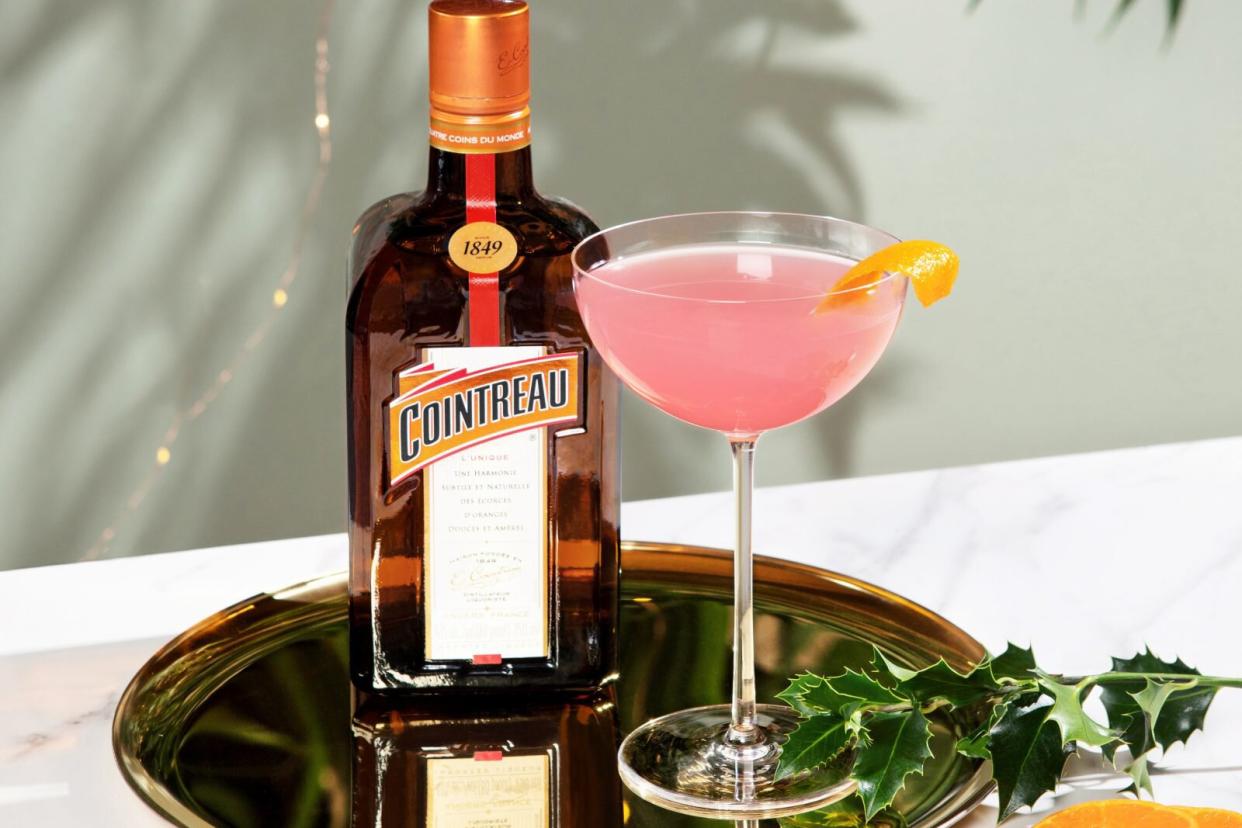Triple Sec, Cointreau, and Grand Marnier: Here's What Makes These Orange Liqueurs Different

Courtesy of Cointreau
TABLE OF CONTENTS
On This Page
Triple Sec
Cointreau
Grand Marnier
Assessing the differences in flavor of three well-known orange liqueurs—Cointreau, triple sec, and Grand Marnier—is a useful undertaking, since they are often (mistakenly) used interchangeably. Let's begin with what they have in common. Cointreau, Grand Marnier, and triple sec share some obvious attributes. Each is a liqueur (meaning a sweetened liquor, sometimes infused with botanicals) that is traditionally sipped after a meal as a digestíf. Today, they are more likely to be associated with mixology than with post-prandial sipping. Each is flavored with orange peel, and each has a French name. Pretty simple, right?
But how do they differ? Cointreau and Grand Marnier are proprietary blends: There is only one Cointreau and there only one Grand Marnier. Triple sec, on the other hand, is an orange liqueur manufactured by over a dozen brands. It also tends to be more economical than the first two. Let's explore each one, so you know what to reach for when you're mixing up your own drinks.
Related: Classic Cocktail Recipes Every Home Mixologist Should Know How to Make
Triple Sec
Many brands produce Triple sec globally, so while the name remains French, the triple sec you choose may be made in the United States. Quality can be very brand-dependent. The associated price point differs widely, too. Alcohol by volume for triple sec ranges from about 15 to 40 percent.
What Triple Sec Tastes Like
Orange is dominant on the nose, and can range from an honest peel-scent to cloyingly artificial. At its best, a decent triple sec is about orange zest in terms of scent and flavor, and can hold its own with dignity. At its worst, it can smell and taste like fake orange gum.
The burning question is: Are you going to notice these taste differences when it is shaken up with assertive or low-quality tequila and sour mix? We think not. Triple sec gets a bad rap because it is associated with poorly made drinks and overindulgence—but the best iterations are a good match for Cointreau. If you are going for a serious and properly mixed margarita, a side-by-side comparison can be illuminating.
Triple Sec vs. Cointreau
Triple sec is generally exceptionally sweet, and more syrupy than Cointreau.
Best Triple Sec to Use
We recommend Vedrenne Curaçao Triple Sec or Marie Brizard.
Cointreau
The first thing that sets Cointreau superficially apart is its easily identifiable, square-sided amber bottle. The liqueur inside is colorless, and is 40 percent alcohol by volume. The bottle's label reads in French: Une harnonie douce subtile et naturelle des ecorces d'orange douces et ameres, which translates to "a subtle and natural sweet harmony of sweet and bitter orange peels." (Which it is.)
What is interesting is that Cointreau is, in fact, a triple sec. In order to distinguish its orange liqueur from a riff-raff flurry of other triple secs, Cointreau dropped the description from its original name "Cointreau Triple Sec" and became simply "Cointreau."
What Cointreau Tastes Like
Cointreau's flavor is frank with orange peel, with aromatically piercing and clean citrus oil nose. It is sweet, with a syrupy texture.
Best Ways to Use Cointreau
The classic margarita calls for Cointreau (plus good silver tequila and fresh lime juice). Because its flavor is uncomplicated by spice notes, Cointreau is very adaptable in blending, and shakes up beautifully with clear spirits as well as with brandies, and darker, aged liquors. In terms of versatility, Cointreau gets top marks.
Grand Marnier
In its long-necked bottle with vertical red ribbon and recessed red-wax stamp, Grand Marnier is instantly recognizable. Like Cointreau, it weighs in at 40 percent alcohol by volume. Its label explains that it is made with 49 percent orange liqueur (basically triple sec) blended with 51 percent cognac, which is why it is caramel, not colorless like triple secs.
Grand Marnier vs. Cointreau
Grand Marnier has the unmistakably warm quality of cognac, and is spicier, more complex, and deeper in flavor than Cointreau (and all triple secs, for that matter). Like these other orange liqueurs, Grand Marnier is very sweet.
Best Ways to Use Grand Marnier
Because of its relative complexity, Grand Marnier is less versatile and more particular when it comes to shaking up a cocktail; its strong personality requires extra discernment on the part of the mixologist. Grand Marnier blends with darker or aged liquors like golden tequila, brandy, and whisky. It is superlative dashed into a flute of chilled Champagne. The Sidecar, an iconic cocktail, tastes best, we believe, with Grand Marnier (the cognac in the drink speaks to the cognac in the liqueur). And it is our liqueur of choice for the most classic of old-school desserts, Crêpes Suzette.

